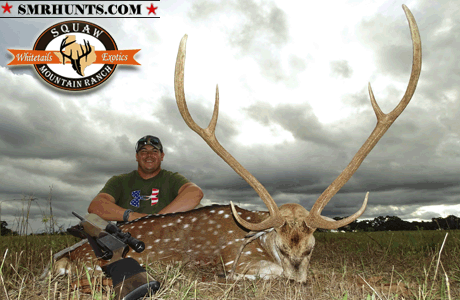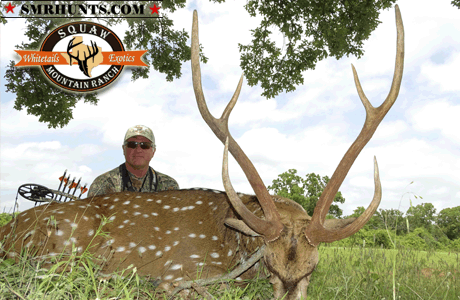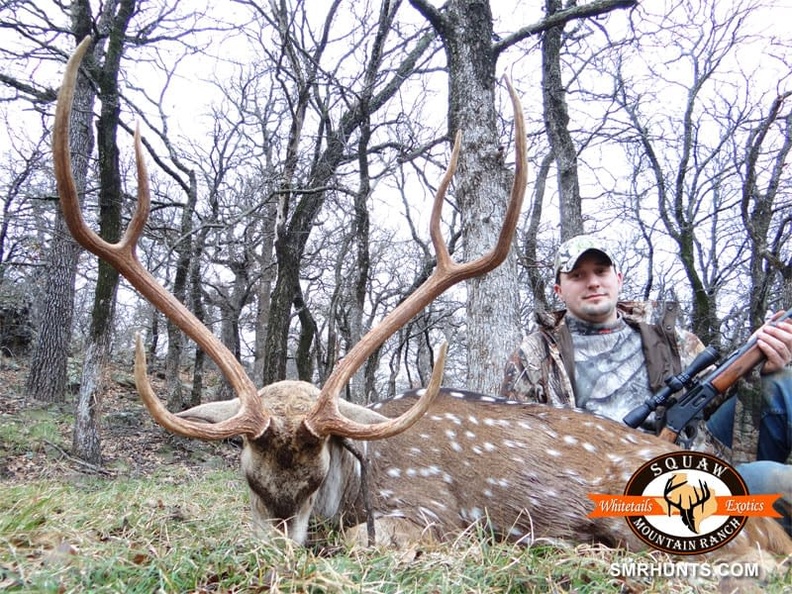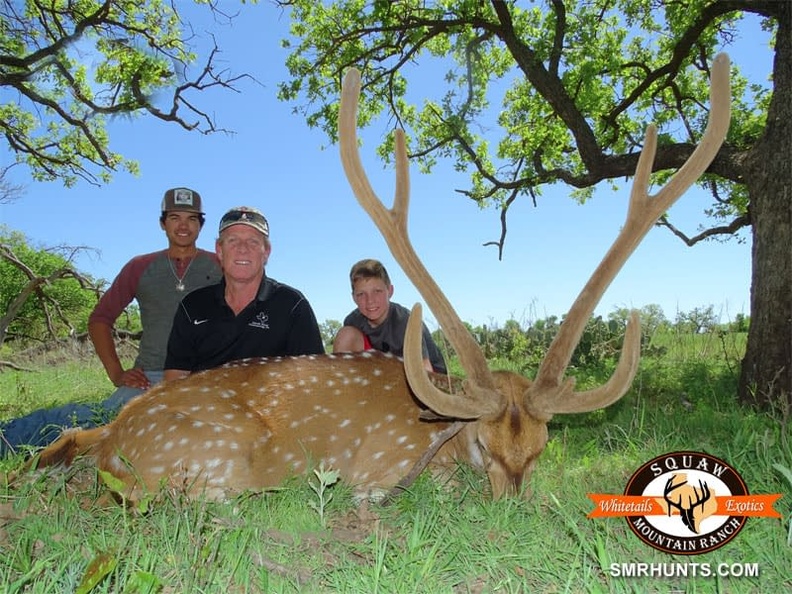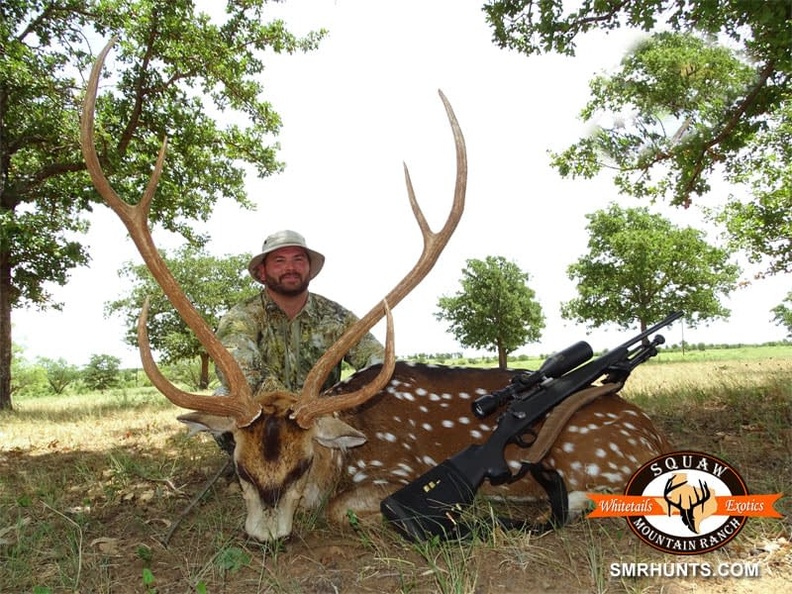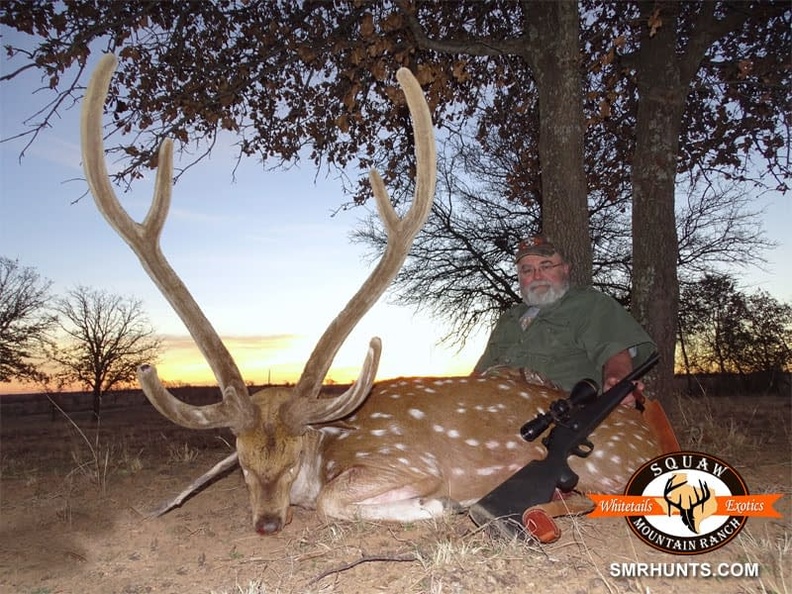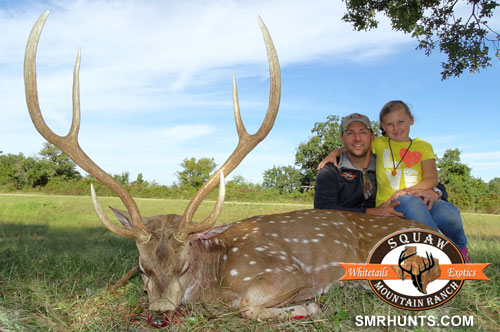
Experience Texas Axis Deer Hunts Today
Squaw Mountain Ranch provides hunters the opportunity to hunt a trophy axis deer in North Texas in a beautiful setting that we have cultivated over many years. We have a huge herd of axis deer on the ranch with excellent genetics producing amazing trophy axis deer each year.
They reproduce quickly, which provides an advantage over other species and make for great hunting.
The axis deer has become one of Texas’ most sought-after exotic game species. The reason axis deer have reached such great popularity among deer hunters is that they are plentiful, they make nice trophies, and they can be hunted year-round.
Squaw Mountain Ranch prides itself on providing outstanding axis hunts at an affordable price compared with other ranches, while giving the hunter a five-star experience and service second to none. We are the best spot for axis deer hunts in Texas.
Safari Style Hunts Are Unique in North Texas
The habitat and terrain on Squaw Mountain Ranch afford hunters the ability to hunt safari style from high rack vehicles, hunt from a modern comfortable blind, or even engage in a good old-fashioned spot to stalk hunt for your trophy.
Our trained specialists cater your individual needs during your hunt. We ensure a fair chase hunt that will provide you with a formidable trophy that you will be proud to hang in your trophy room. Many hunters have axis deer mounts in the velvet and hard-horned.
Axis Deer Are Distinctive
Native to India, axis deer are an attractive trophy. The trophy axis is usually 6+ years old, weighs 160 to 210 pounds with 6 points and 28+ inch beams. Axis deer are larger than the standard
whitetail deer and unlike the whitetail, they are herd animals, and behave more like an elk.
The North American Deer Farmers Association (NADeFA®) reports that free ranging axis deer populations exist in the United States, Hawaii, and Australia. Axis deer were introduced into Texas in 1932 as a game animal. Texas has by far the largest population of axis deer in the U.S.
Axis deer, also known as the chital (as they are known in India) and the spotted deer, have one of the most beautiful hides, golden brown with white spots and a black line down its spine. The male axis deer are the only ones with antlers which are three-pronged and are nearly 3.3 ft long which they shed every year and grow new ones. Males, called bucks, weigh in at close to two hundred pounds. Females, called does, weigh just over one hundred pounds.
Hunt Axis Deer Year-Round
For an avid hunter who cannot wait until whitetail season rolls back around, the axis deer is a great between season game to hunt. There are no seasonal restrictions on axis deer hunting in Texas, which makes it a suitable trophy to hunt year-round. The best months for hunting axis are May-August.
FAQs About Axis Deer Hunting
Learn more about Axis Deer Hunting below.
Yes, you can hunt Axis Deer in Texas at Squaw Mountain Ranch.

